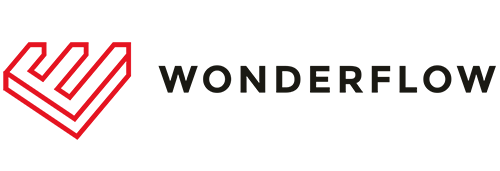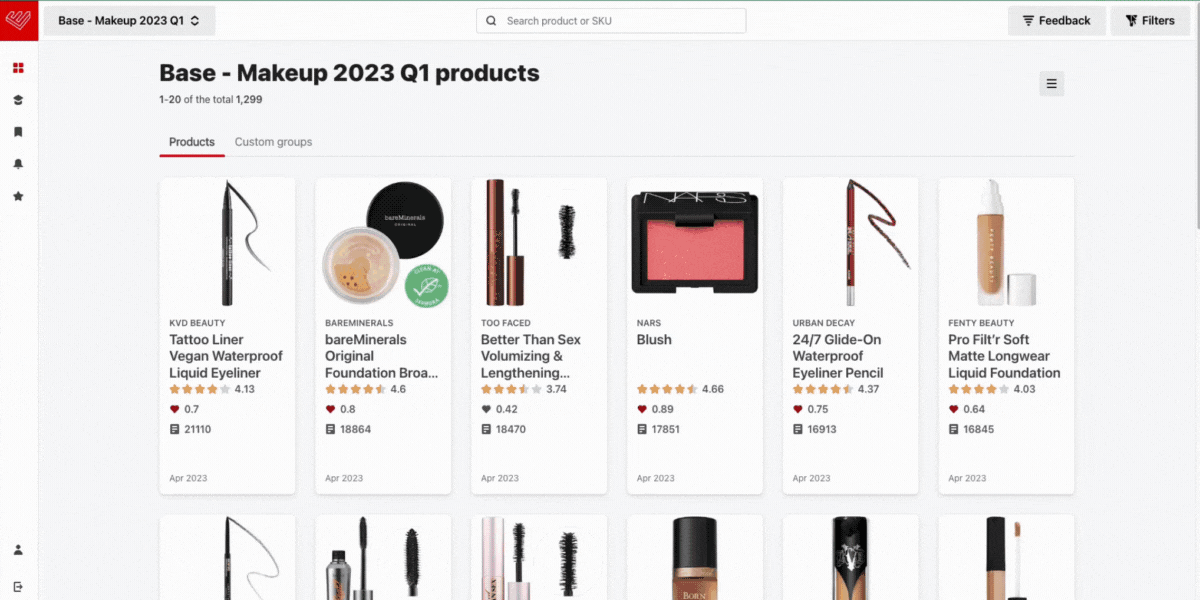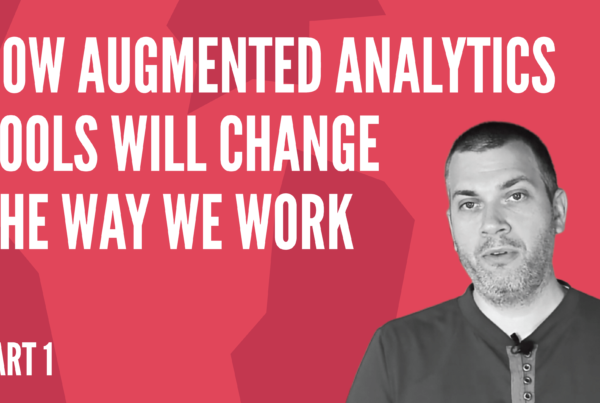After serving enterprise leaders for over ten years in AI and the customer experience sectors, the cumulative passion of all our hard work at Wonderflow has now resulted in a new revolutionary product that we like to call Wonder. Find out in this article exactly what Wonder is and why, and how it will change the way businesses do market research forever.
All You Have to Do Is Ask: What Is Wonder?
Wonder is a branch of Wonderflow or its new product. Similar to its more popular counterpart, ChatGPT, Wonder is a chatbot that can generate information within seconds while responding in a conversational manner and after business users ask it a few questions.
It’s found within the Wonderboard, our predictive text or sentiment analytics tool that utilizes Natural Language Processing (NLP) technologies to analyze the voice of the customer data for companies. Users can find Wonder in the main menu of the dashboard.
Did you miss the live Wonder Keynote on July 6th, 2023 when we introduced the new product? Watch below the recording, including more on our company background and use cases (with narration):
Your Key to Actionable Intelligence: How Does Wonder Work?
Wonder uses Generative AI based on an LLM (Large Language Model) data lake. Generative AI is a type of artificial intelligence that uses data to generate and create content, such as texts or images, while LLM is a type of AI algorithm trained on massive data sets. Wonderflow runs the world’s largest data lake, giving Wonder huge amounts of real-world data to work with.
For example, when you ask Wonder a question, it uses the data it has access to and parses it to find information relevant to the topic. It will then provide you with the information you’re looking for and a recommendation for improvement. Depending on the user question, you can instantly learn about your brand, products, competitors, and consumers.
On top of that, Wonder can generate comparison tables or bar graphs to help users visualize the data and always delivers one or more tips at the end of its responses so your teams know what to do next.
Next, we show you snippets of three Wonder use cases from the point of view (POV) of three key stakeholders. As said, if you want to catch the full use cases with audio sound or narration, hover on above to watch them at the end of the Wonder Keynote recording.
Use Case #1 of Wonder: The Product Owner’s POV
In this use case, let’s act as a Product Manager wanting to develop better earbud products, specifically the Studio Buds. So he asks Wonder various research questions to understand how it’s performing and what customers like and dislike about this earbuds, including other similar earbuds.
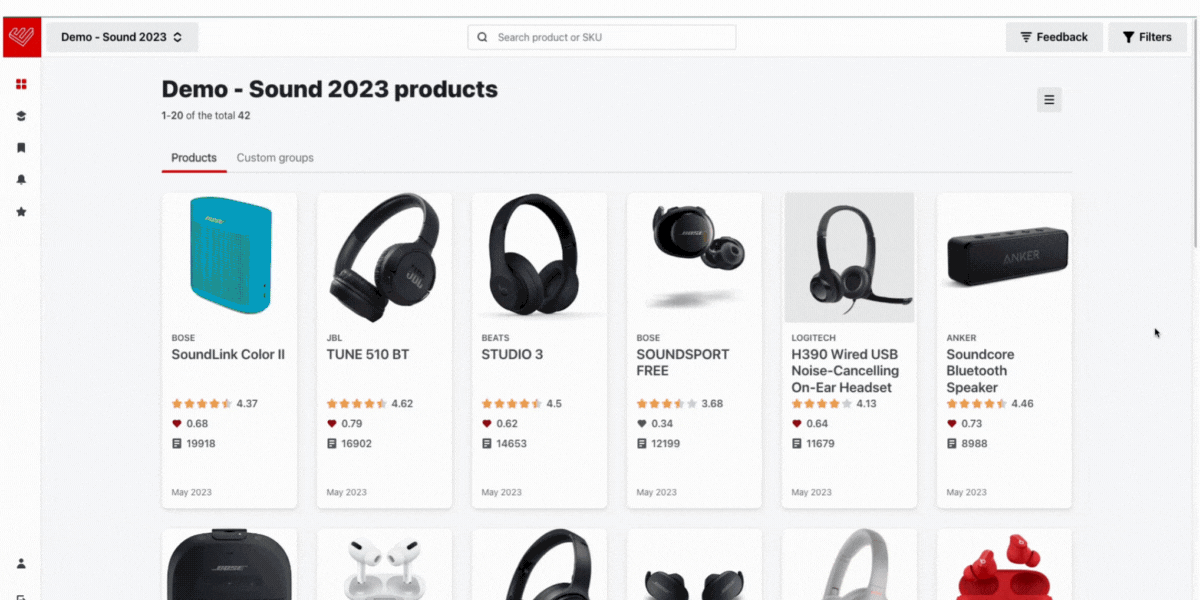
Use Case #2 of Wonder: The Marketer’s POV
Let’s say you are a Marketing Manager at Continental, a leading Tyre brand. Watch below how she leverages Wonder’s powerful analytics to better understand her industry and competitors to generate an effective campaign message.
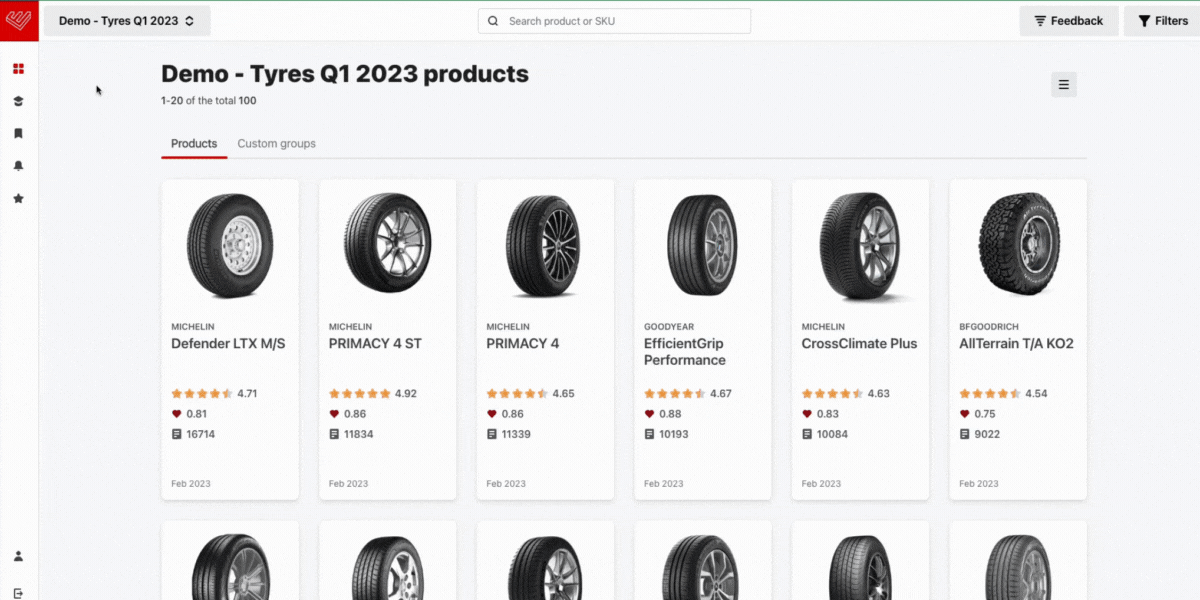
Use Case #3 of Wonder: The Executive’s POV
Last, but not least at all (as many other stakeholders can benefit from Wonder!), another leading example is navigating through the Wonderboard as a Strategy Team’s executive or, say, CEO or CTO, at Sephora. You want to analyze the brand’s Foundation lines to see what products need improving or eliminating and to act quickly with data.
Why Wonder Will Change Business Intelligence Forever
The launch of Wonder by Wonderflow is not just any new product launch. It’s a transformative innovation found nowhere else in the VoC space, thus paving the way for newer similar innovations in the future of technology. Wonder will change how companies do market research and achieve decision intelligence. It’s not simply a next-generation AI product that’s easy to use and delivers massive value to companies; it’s a moment of truth for business intelligence as a whole.
To summarize, the main benefits of Wonder include (but are not limited to) the following:
- Saves you time: Forget working overtime or making the interns take on the burden of redundant analysis tasks. Wonderflow’s AI already saves businesses time with automatic reviews collection and analysis, and instant transformation of data into actionable insights. Now, even more, time is saved via Wonder because searching for the specific answer you want from that pool of gathered insights is done within seconds. All you do is prompt Wonder with a question or command, and boom! An (in-depth) response pops up.
- Saves you money: If companies use Wonder, paying for traditional market research and consultancy or analysts firms could drop dramatically, freeing up your departments’ budgets because all your relevant insights are right there within the Wonderboard. No need to go anywhere else or ask anyone else!
- Increases employee productivity: No one likes redundant tasks or manually analyzing huge datasets, thus why Wonder will motivate your teammates to conduct more effective research. The hassle of data sorting, extensive googling, surveying, and others, are out of the picture. Wonder tells you already what specific topics customers are praising or complaining about, the predicted number of points it takes to raise your product’s star rating and sentiment index, your competitors’ top strengths and weaknesses, the precise areas of improvements on product specs, and much more.
- Highly intuitive and easy to use: Wonder is a no-brainer, even for the “non-techies” in your organization. Just like chatting with a customer service chatbot, you log into the Wonderboard, select a specific dashboard for your industry (product, competitor), and start asking Wonder right away several questions until you get your answers. The cherry on top? You can download the results into a PDF with one click.
- Drastically improves the customer experience: Wonder’s responses are based on real customer feedback, from thousands of channels. Its responses or insights are 100% accurate because this is what customers think, and they explicitly tell your brand what to do (or not to do) to increase their satisfaction. It does not get any more truthful than this, so your business can experience greater sales, ROI, and an NPS upgrade.
- Streamline your organization’s internal processes: Previously, data analysis was time-consuming, costly, and resource-heavy, requiring teams of people to sift through vast amounts of customer reviews and other sources to try and gain consumer insights. Ask Wonder for anything you want to learn, and it does the work for you in seconds.
- Grant your business a competitive edge: With instant access to such vast amounts of consumer data, businesses will be more able to identify pain points, predict trends, forecast sales, enhance their customer experience, and understand their markets like never before. Wonder makes staying ahead of the curve easy.
- Delivers actionable insights: Wonder doesn’t just provide businesses with information – it also gives them actionable recommendations based on its research. Every time users ask Wonder a question, it will include a data-driven suggestion on improving products and services. Users will be able to optimize products, strategies, and more with confidence.
Next up, check out our frequently asked questions (FAQs) below for what many ask about this game-changing innovation!
FAQs on Wonder
How would Wonder help my departments?
Wonder is easy to use by several departments and beneficial to them. For example, for Sales, you can leverage Wonder to predict future sales trends, set targets, get detailed competitor insights, and contextualize data-based market intelligence. Marketing can use Wonder to optimize campaign copies, perform keyword and hashtag research, get competitor insights, and create content.
The CX team can use Wonder to get detailed insights, analyze VoC data, provide context, and optimize the customer journey. C-level decision-makers can use Wonder to get competitor insights, market data, sales trends, historical context, and other information needed for executive-level decisions.
What sort of questions can I ask or prompt Wonder?
You can ask it anything related to your business, products, and marketing efforts. You may want insights into your competitors, sales targets based on the last 5 years, or consumer insights on a particular product. You can also prompt it with a command, such as “Write a marketing campaign message.” As said, all you have to do is ask!
Some examples include:
- Which topics are the most relevant for customer satisfaction?
- Please show me some verbatim where customers talk about these topics.
- How are competing products performing?
- Could you create a tagline and a short paragraph to highlight why our product is the best for people that find the topic relevant?
- What are our strengths and weaknesses?
- What products in our portfolio have the highest star rating and get very positive reviews about the most relevant topics for our customers?
What’s the difference between ChatGPT and Wonder?
While ChatGPT and Wonder are generative AI technologies, they have stark differences in their business impact. Wonder is a generative AI solution tailored for enterprises and specializes in voice of the customer analysis. Unlike ChatGPT, Wonder is linked to a massive global data lake of consumer reviews and can generate actual practical tips for businesses to act on, as well as graphs and charts based on real-time competitor and market data.
Stay tuned for our upcoming blog post on this topic to learn more.
